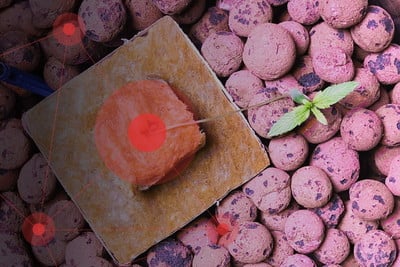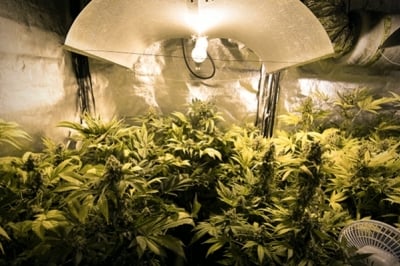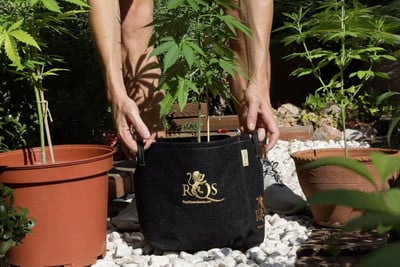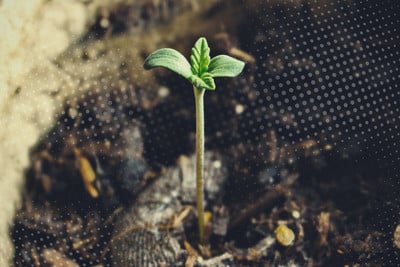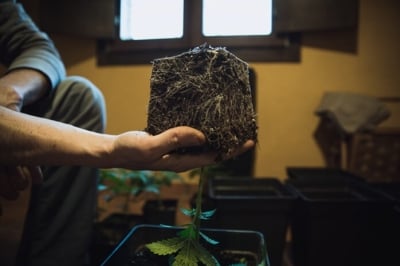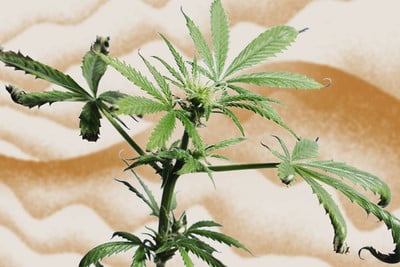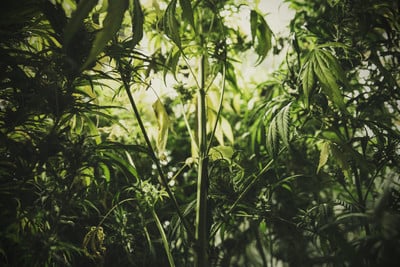Included FREE items

How to Prevent and Fix Stretching in Cannabis Seedlings
- Growing cannabis step by step
- Cannabis growing basics
- Choosing your seeds
- How to germinate seeds
- The cannabis vegetative stage
- The cannabis flowering stage
- Harvesting cannabis
- Trimming, drying, and curing
- Choosing pots and soil
-
Growing indoors
- A Complete Overview Of Growing Cannabis Indoors
- Cannabis Cultivation Tips: How To Set Up Indoor Grow Lights
- How Many Cannabis Plants Can You Grow Per Square Metre?
- Indoor Cannabis Growing: Relative Humidity and Temperatures
- Hydroponics Cannabis Growing Guide (with diagrams)
- Cannabis Micro Growing: Growing Great Weed in Tiny Spaces
- Growing outdoors
- How to grow autoflowering cannabis
- Cannabis nutrients and pH
- Cannabis troubleshooting: Nutrients
-
Cannabis troubleshooting: Growing
- Cannabis Seed Germination — Troubleshooting Guide
- How to Deal With Pythium (Root Rot) in Cannabis Plants
- Slow Cannabis Plant Growth And What You Can Do About It
- How to Prevent and Fix Stretching in Cannabis Seedlings
- Watering Your Cannabis: How To Fix Over And Underwatering
- Understanding Male, Female, And Hermaphrodite Cannabis
- Identifying and Treating Common Cannabis Ailments
- How To Revive a Sick Cannabis Plant
- How to Avoid Mouldy Weed During Drying and Curing
- How to Prevent and Treat Dry and Crispy Cannabis Leaves
- What Cannabis Leaves Can Tell You
- Yellow Cannabis Leaves
-
Cannabis Strains Grow Report
- HulkBerry Automatic Grow Report
- Blue Cheese Auto Grow Report
- Purple Punch Automatic Grow Report
- Triple G Automatic Grow Report
- Do-Si-Dos Automatic Grow Report
- Green Gelato Automatic Grow Report
- Haze Berry Automatic Grow Report
- Purple Queen Automatic Grow Report
- Cookies Gelato Automatic Grow Report
- Sherbet Queen Automatic Grow Report
- Sweet Skunk Automatic Grow Report
- Medusa F1 Grow Report
- Cannabis plant training
-
Weed growing tips
- The Cannabis Plant Anatomy
- How to preserve seeds
- How Much Sunlight Do Outdoor Cannabis Plants Need To Grow?
- How to Control and Prevent Stretching in Cannabis Plants
- How And When To Transplant Your Cannabis Plants
- My Cannabis Plants Are Growing Too Tall: What Should I Do?
- Should You Worry About Purple Or Red Cannabis Stems?
- What To Do When Your Indoor Cannabis Won’t Flower
- How To Protect Your Cannabis Plants From Heat Stress
- How To Tell If Your Female Cannabis Plant Has Been Pollinated
- Growing Medical Marijuana
- Bud Washing: How to Clean Your Weed
Fix stretching in cannabis seedlings, and prevent it from happening again.
Contents:
Just like baby humans, cannabis seedlings are super fragile and need plenty of tender loving care to flourish. Unfortunately, many growers run into the same issue during the early stages of their cannabis plants’ lives; their seedlings grow long, stretchy, and weak stems. This, in turn, can lead to a host of issues that put your crop at risk of delivering subpar results.
Below, you’ll learn how to prevent and fix stretching in cannabis seedlings.
Understanding the Seedling Phase
Seeds are like little genetic time-capsule bombs. What this means is that they only have one job, and only get one chance to pull it off. They are pre-programmed to survive. A seed self-contains absolutely everything a future plant needs to get started. Once activated with moisture and darkness, it will trigger germination, and once that gets going, there is no turning back.
A seedling does not need any food for the first good few days of its life. From its genetics, it is already backpacking all the essential nutrients needed to embrace the miracle of life. Seedlings have a little reserve to help establish themselves in their growing environment.
In optimal conditions, the seed shell, or husk, will crack open and a taproot will pop out, immediately digging further down in search of a water lifeline. Soon, you will see a sprout rise from the under the soil, spread out its first baby leaves (cotyledons), and then you will start noticing the first set of true leaves. Leaves have an equally important job as the taproot, but they are in search of another food source - light. Quite literally, a plant uses light to digest what it brings up from the soil.
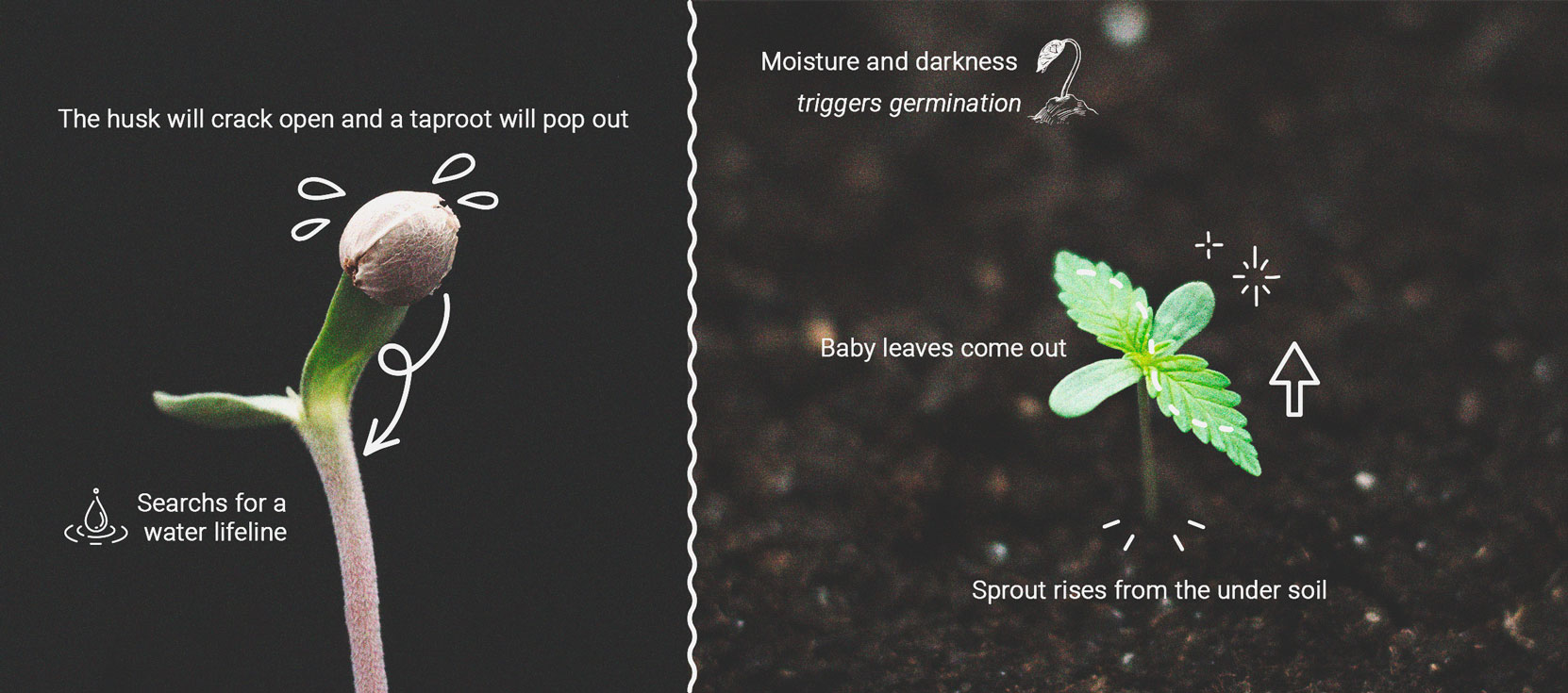
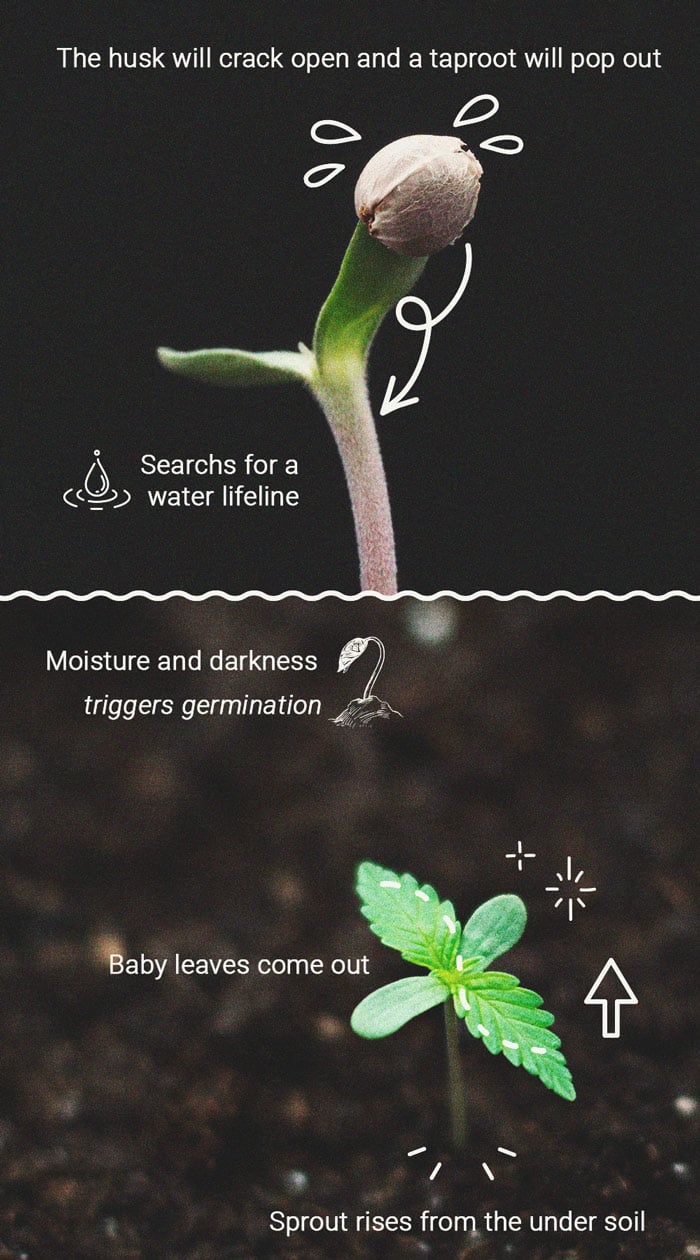
The Perfect Light Conditions for Cannabis Seedlings
To grow healthy seedlings, it’s important to give them the right amount and type of light as soon as they break out of their shells. Cannabis seedlings like to receive around 16 hours of light per day at an intensity of 375 lumens and 4000 lux.
To meet these requirements, we recommend using one 12W CFL bulb per 1–2 seedlings. Keep the bulb 5–7.5cm (2–3in) from the top of the seedlings and monitor their growth carefully, making sure the plants don't make contact with the bulbs.
Growing your seedlings under lights with a high percentage of red light may cause them to stretch. Blue light, on the other hand, helps to keep internodal spacing to a minimum and encourages plants to grow nice and stocky from the get-go.
What Causes Abnormal Stretching?
Abnormal stretching in the seedling phase is a sign of stress. By far, the most common situation that causes seedlings to stretch and topple over is light deprivation.
In the same way taproots dig for water and nutrients, the top part of the plant will stretch vigorously if it’s not receiving enough light. It’s a survival mechanism in which a plant uses up all its stored energy to rise above competing flora. In the case of indoor growing, there is no competition, but the seedling will perceive it this way. For instance, leaving the pot under a windowsill in the shade will likely trigger this behaviour. Things can get even more dramatic under artificial light.
This may seem a bit confusing for new indoor growers, as they may think they are providing more than enough light to their plants. But consider the following: Positioning a 200W metal halide (MH) bulb relatively far from the pot will be less effective than a 20W CFL bulb placed a few inches from the leaf surface. Even though CFLs are much weaker than MH, light intensity drops significantly the further away plants are from the source.
Moreover, seedlings have very small, and few, leaves. The total surface area available to absorb light is very small. So, in essence, that 200W bulb will be radiating over a very large area, but the seedling can only use a minute fraction of it. The CFL positioned right over the plant, on the other hand, will be able to give most of its 20W directly.
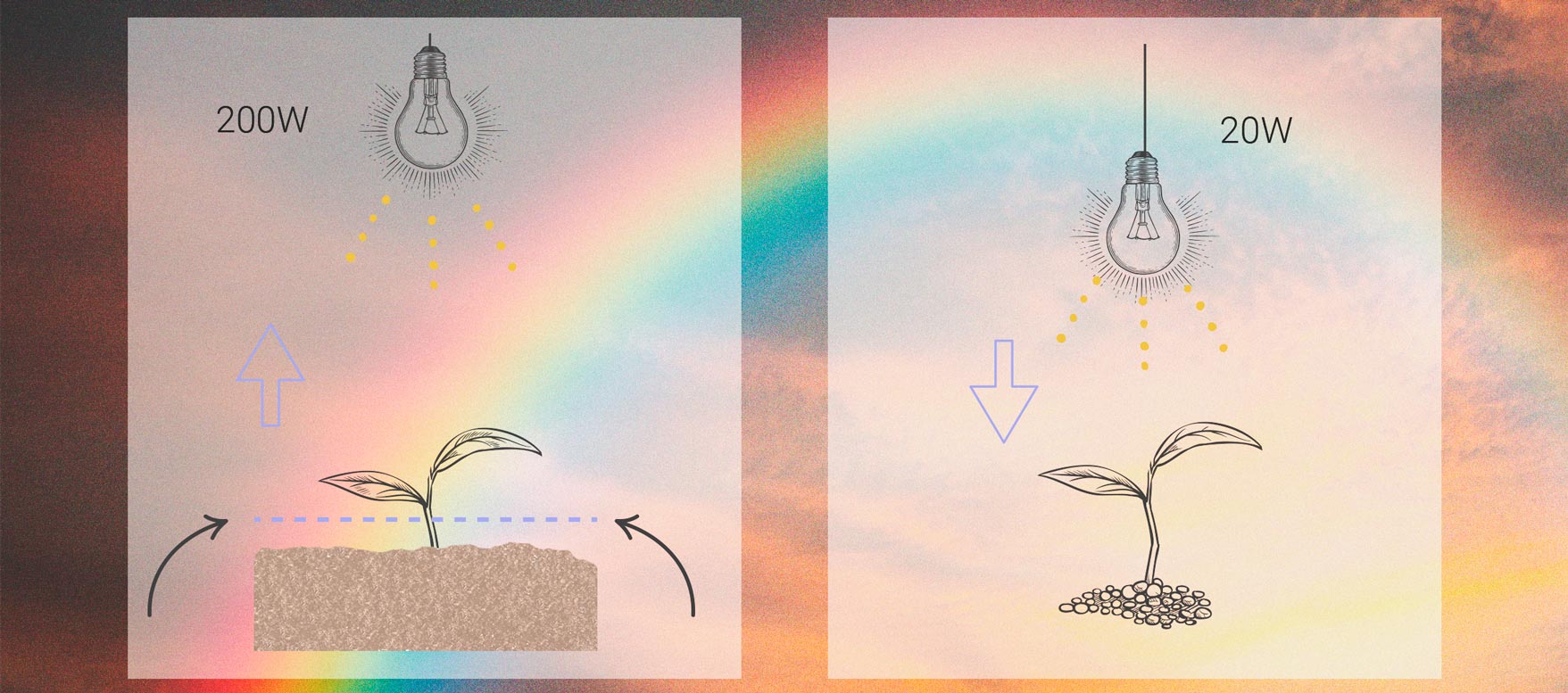
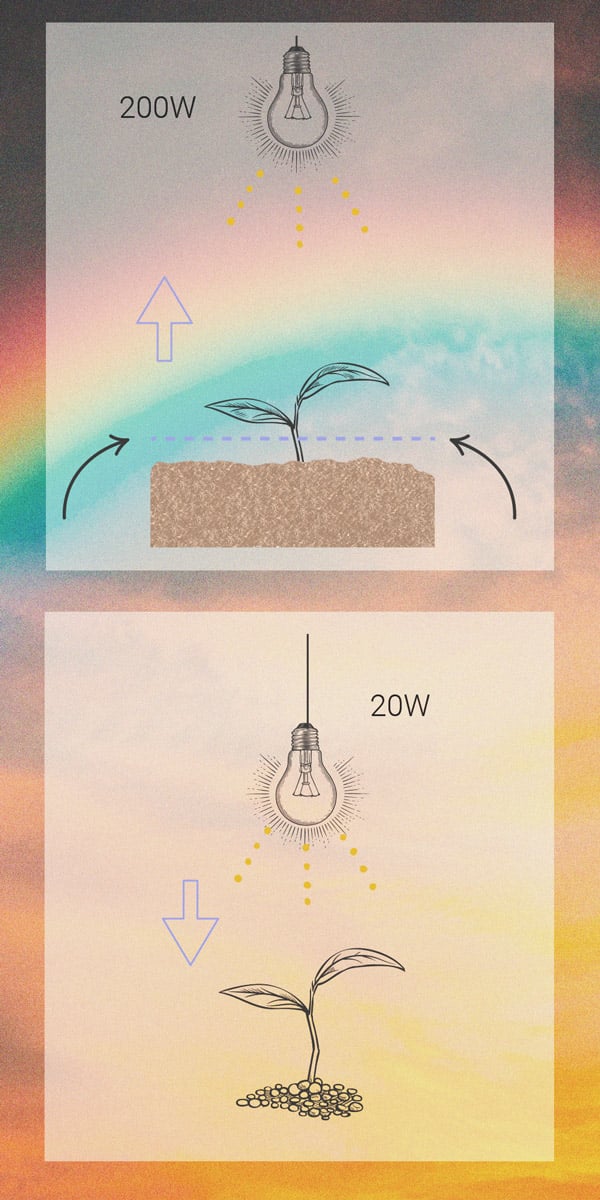
Other Potential Causes of Stretchy Cannabis Seedlings
Besides light deprivation, there are a handful of other factors that could be causing your cannabis seedlings to stretch. One common cause of leggy seedlings is poor nutrient content in the soil.
More precisely, cannabis seedlings benefit from nitrate-derived nitrogen. Unlike ammoniacal nitrogen, nitrate-nitrogen is a lot easier for plants to absorb and fuels shorter, bushier vegetative growth. If your seedlings are stretching despite ideal light conditions, we highly recommend checking the ammoniacal nitrogen content in your soil and fertiliser.
Another cause of leggy seedlings is heat.
While cannabis seedlings like warm, humid conditions, too much heat can cause a plant’s leaves to grow slower than its stem, resulting in tall and stretchy growth. To promote healthy seedling growth, we recommend keeping the temperatures in your grow room or dome at 19–20°C during the day and roughly 13°C at night.
Finally, cannabis seedlings can also stretch if they’re receiving too much or not enough light per day.
While some growers opt to keep their seedlings under 24 hours of light per day, we recommend sticking to 16 hours. Seedlings are fragile, and giving them too much light can cause stress and stretching. Remember, those dark hours are just as important for your young plants to develop healthy roots and respire.
How to Keep Cannabis Seedlings From Stretching and Falling Over
Stretchy cannabis seedlings can be a pain to handle and transplant. Their stems can be very fragile, and once they start vegging, their foliage can be off-centre due to the weird stretch they underwent as seedlings.
For best results, we recommend replanting your stretching seedlings deeper into their soil, correcting your lighting, and checking the nitrogen levels in your soil and/or fertilisers (as mentioned above). Once you’re confident you’ve created the right environment for your seedlings, pop them back under their lights and monitor their growth. Over time, the buried overgrown stem should sprout roots.
If possible, you may want to consider growing your seedlings outdoors under direct sunlight. There is simply no substitute for Mother Nature, and seedlings in direct sunlight will grow healthy, strong stems with short internodes. Once your plants have developed 2–3 mature leaves, feel free to move them indoors, making sure to keep their lights at the right height to prevent any further stretching.
If you have to grow your seedlings indoors, use the setup described above to ensure they get enough direct light at the right intensity.
Soon, you should notice your seedlings developing healthier growth. Short internodes and compact, green foliage are all signs that your seedlings are growing perfectly.
Note: Some growers try tying their stretchy seedlings to a stake. We do not recommend this method, as it doesn’t do anything to combat the weak, overgrown stem or the difficulty it’ll present further along in the grow.
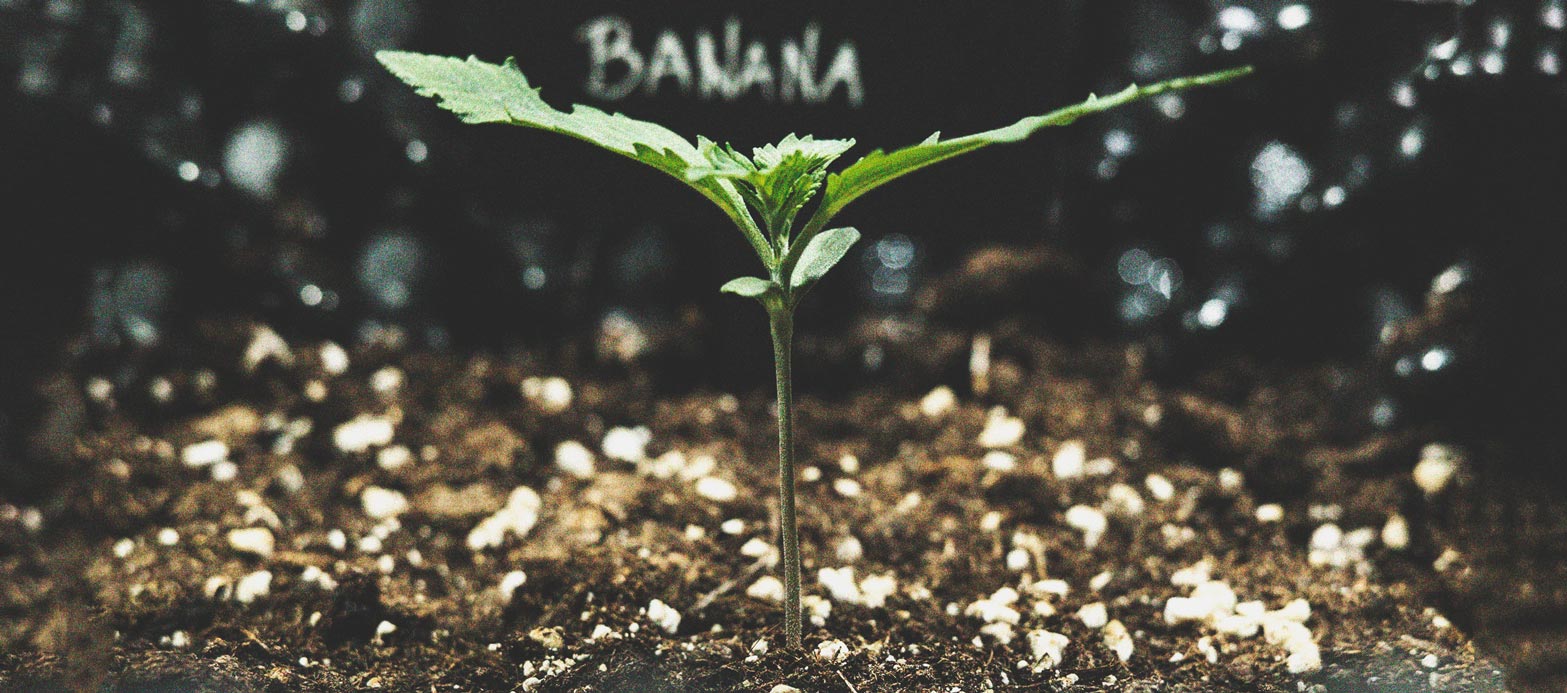
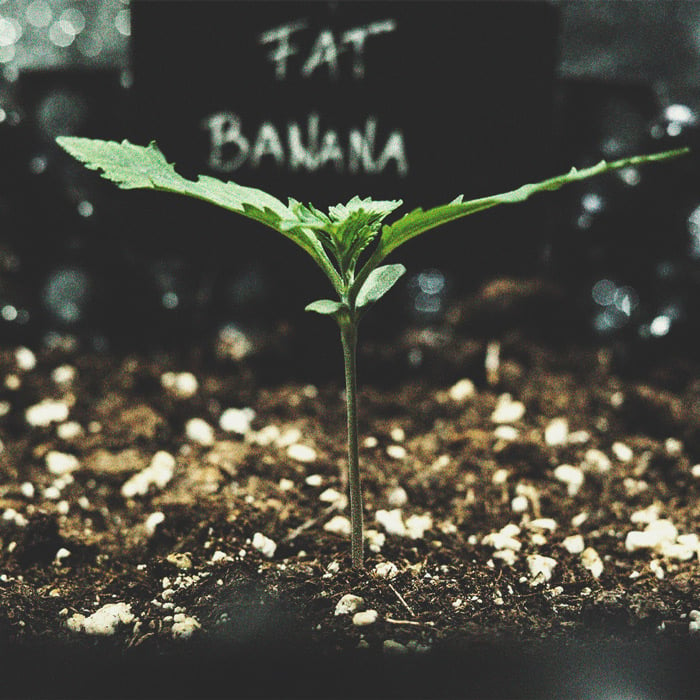
Thinning Your Cannabis Seedling Crop to Prevent Stretching
Thinning is a common agricultural technique that’s often forgotten among cannabis growers. As the name suggests, thinning is all about reducing competition among your plants by “thinning” out the population.
Cannabis plants grow very quickly and will naturally compete with one another for space, light, and nutrients. So, while you may have been taught to think that more plants will naturally translate into bigger, better harvests—that might not be the case. In fact, many experienced growers opt to cull their weakest seedlings and only grow those plants that show the healthiest growth. This way, they focus their efforts on the plants most likely to produce the best flowers.
Thinning also helps growers maintain an even canopy across their grow room, which makes better use of a limited amount of light and space. Finally, thinning can help you avoid pests and other plagues, as you’ll be less likely to end up with a crowded grow space.
To thin your plants, simply keep a close eye on your seedlings throughout the first 1–2 weeks of their life, and only keep those specimens that show the healthiest, fastest growth.


























